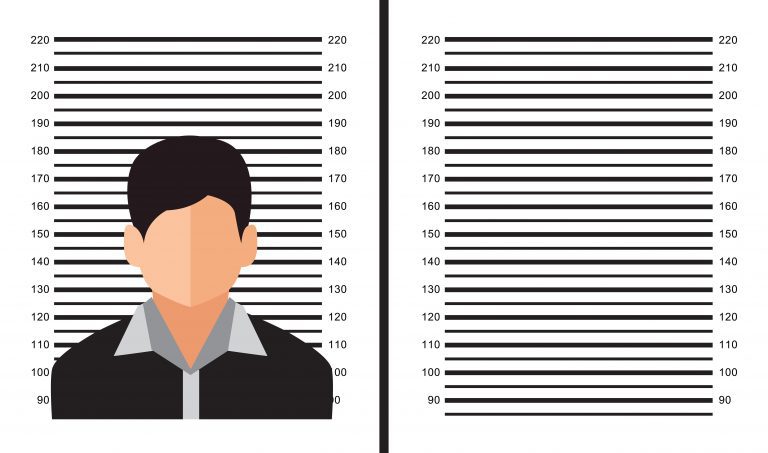The Truth About Online Mugshots: How Long Do They Really Stay Online?
October 31, 2023Online mugshots, a growing concern in the digital age, are booking photographs published on various websites, impacting individuals’ lives significantly….

Knowing who posted bail for a defendant is valuable for various reasons, including understanding their support system, financial resources, and motivations for release. To uncover this information, you can ask the defendant directly, review court and jail records, contact the bail bondsman, or conduct online research.
However, it’s essential to be aware of legal considerations, such as privacy laws and confidentiality agreements, when seeking this information. You can navigate the process effectively by respecting legal boundaries and following appropriate methods.
Uncovering the identity of the bail poster is crucial for verifying their reliability, ensuring safety, and understanding their motives. It helps detect conflicts of interest and hidden agendas, promoting a fair legal process and providing insight into the case’s dynamics and motivations.
When attempting to uncover who posted bail, one effective method is to ask the defendant directly. By conversing with the defendant, you can naturally gather valuable information about who provided the funds for their release. The defendant may willingly disclose the person’s identity or explain the process they went through to secure the bail amount.
It is crucial to approach the defendant respectfully and sensitively, considering they may not feel comfortable sharing this information. By building trust and rapport, you can encourage open communication, which increases the likelihood of obtaining the desired trial information.
During the conversation, ask specific and direct questions about the bail process, such as who they contacted for assistance or if they worked with a bail bondsman. By doing so, you can gain insights into the individual or organization involved in posting the bail.
It’s important to note that not all defendants arrested may be willing or able to provide this information. Some may not have the details or be unwilling to disclose them due to personal reasons or legal obligations. Therefore, respecting their rights and limitations is essential while seeking information to uncover who posted bail.
By carefully reviewing court records, individuals can uncover valuable information about who posted bail, adding clarity and transparency to the bail process. Reviewing court records is essential to uncover how to find out who posted bail for someone in a legal case. One can gather factual information about the bail posting by examining court records. These records often contain details such as the name of the person who posted bail, the amount of bail posted, and any conditions attached.
Court records provide an accurate account of the legal proceedings and can be accessed by individuals involved in the case or their authorized representatives. Reviewing these records allows one to obtain concrete evidence regarding who posted bail and gain insights into their motivations or relationships with the defendant.
It is important to note that court records may vary in accessibility and level of detail depending on the jurisdiction and the specific case. Some courts offer online portals where records can be accessed easily, while others may require in-person visits to the courthouse or formal requests.
By carefully reviewing court records, individuals can uncover valuable public information about who posted bail, adding clarity and transparency to the bail process. Following legal procedures and guidelines when accessing court records is crucial, ensuring privacy rights and confidentiality are respected.
When you want to uncover who posted bail, one method you can use is by contacting the bail bondsman. He or she holds the responsibility of posting bail on behalf of the defendant. By contacting the bail bondsman, you can gather information about the person who provided the funds for the bail bond amount. This can be achieved by calling or visiting the bail bondsman’s office. It is important to approach the conversation with the bail bondsman respectfully and professionally.
During your conversation with the bail bondsman, you can inquire about the specific details of the transaction, including the amount of money or bail that was posted and any conditions or collateral that may have been required. The bail bondsman might also be able to share information about the relationship between the defendant and the individual who posted bail.
It is necessary to remember that the bail bondsman may have certain obligations and restrictions when sharing information. Confidentiality agreements and legal considerations bind them. Thus, they might not be able to disclose the identity of the person who posted bail without obtaining the individual’s consent or a court order.
You can gather valuable information to determine who posted bail by contacting the county jail or the bail bondsman. It is crucial to approach this method with an understanding of and respect for any limitations that may be in place.
Legal considerations are important when attempting to uncover who posted bail. It is crucial to consider privacy laws, court orders, and legal representation. Privacy laws and regulations may affect discovering who posted bail, so ensuring that actions comply with the legal framework is essential.
In some cases, a court order may be necessary to access information about who posted bail, and such orders should be obtained through legal channels and followed accordingly. Seeking the guidance of a qualified attorney who specializes in criminal law is advisable, as they can provide valuable advice and assistance in navigating the legal considerations associated with uncovering who posted bail. It is also important to be aware of the potential consequences, especially if it involves breaching privacy laws or infringing upon someone’s rights.
Understanding the potential legal ramifications is essential before proceeding with any actions. The significance of understanding these legal considerations is highlighted by a study released and conducted by the American Civil Liberties Union in 2019, which found that approximately 60% of people in U.S. jails are being held on pretrial, awaiting their day in court.

Online mugshots, a growing concern in the digital age, are booking photographs published on various websites, impacting individuals’ lives significantly….

The “Mugshot Zone” is a pressing issue in the digital age, causing harm to people’s lives. This guide aims to…

The public availability of mugshots has been a topic of debate and raises important considerations regarding privacy and the impact…